Featured image credit: SpaceX
Lift Off Time | March 17, 2023 – 23:38 UTC | 19:38 EDT |
|---|---|
Mission Name | SES-18 & SES-19 |
Launch Provider | SpaceX |
Customer | SES S.A. |
Rocket | Falcon 9 Block 5 B1069-6; 43.65-day turnaround |
Launch Location | Space Launch Complex 40 (SLC-40), Cape Canaveral Space Force Station, Florida, USA |
Payload mass | ~7,000 kg (15,400 lb) |
Where did the satellites go? | Geosynchronous transfer orbit |
Did they attempt to recover the first stage? | Yes |
Where did the first stage land? | Just Read the Instructions droneship about 420 miles (670 kilometers) east of Cape Canaveral |
Did they attempt to recover the fairings? | TBD |
Were these fairings new? | The fairings halves were flight proven |
This was the: | – 212th Falcon 9 launch – 117th SpaceX launch from SLC-40 – 19th launch for SpaceX in 2023 – 146th Falcon 9 flight with a flight-proven booster – 152nd re-flight of a booster – 18th re-flight of a booster in 2023 – 180th booster landing – 106th consecutive landing (a record) – 41st orbital launch attempt of 2023 |
Where to re-watch | Official replay |
How Did It Go?
SpaceX successfully launched the SES-18 & SES-19, two C-band satellites, on their Falcon 9 Block 5. The rocket lifted off from Space Launch Complex 40 at the Cape Canaveral Space Force Station in Florida, marking the 19th launch of the company this year.

SES-18 & SES-19 Mission
The SES-18 & SES-19 are C-band communication satellites owned by SES S.A., a Luxembourgian telecommunication company. The satellites were designed, produced, and tested by Northrop Grumman in Dulles, Virginia. Each satellite has a mass of 3,500 kg, two solar arrays, a lifespan of 15 years, and is equipped with a high-quality C-band payload. Their main aim is to provide North America with digital broadcasting services. Together with the other four satellites (SES-20, SES-21, SES-22, and SES-23), the SES-18 & SES-19 satellites will contribute to the effort of clearing the lower portion of the C-band spectrum necessary to deploy 5G services in the United States.

The SES-18 & SES-19 likely make use of a software system called Adaptive Resource Control (ARC). This software already supports the SES-17 satellite launched in October 2021. ARC provides dynamic management of service requests and available resources in orbit and on the ground. SES has been working on ARC with Kythera Space Solutions since September 2019, when they jointly announced the development.

The satellites use a GEOStar-3 satellite platform developed by Northrop Grumman. Compared to the previous generation (GEOStar-2), this platform has better battery capacity and increased solar array power. Some characteristics of the GEOStar-3 bus can be found here.
The SES-18 & SES-19 satellites will begin their commercial service in June 2023. The SES-18 satellite will replace the SES-3 satellite launched in 2011 and will operate at 103 degrees west longitude. The SES-19, in turn, will be co-located with the SES-22 satellite at 135 degrees west longitude.
What Is Falcon 9 Block 5?
The Falcon 9 Block 5 is SpaceX’s partially reusable two-stage medium-lift launch vehicle. The vehicle consists of a reusable first stage, an expendable second stage, and, when in payload configuration, a pair of reusable fairing halves.
First Stage
The Falcon 9 first stage contains 9 Merlin 1D+ sea-level engines. Each engine uses an open gas generator cycle and runs on RP-1 and liquid oxygen (LOx). Each engine produces 845 kN of thrust at sea level, with a specific impulse (ISP) of 285 seconds, and 934 kN in a vacuum with an ISP of 313 seconds. Due to the powerful nature of the engine, and the large amount of them, the Falcon 9 first stage is able to lose an engine right off the pad, or up to two later in the flight, and be able to successfully place the payload into orbit.
The Merlin engines are ignited by triethylaluminum and triethylborane (TEA-TEB), which instantly burst into flames when mixed in the presence of oxygen. During static fire and launch, the TEA-TEB is provided by the ground service equipment. However, as Falcon 9 first stage is able to propulsively land, three of the Merlin engines (E1, E5, and E9) contain TEA-TEB canisters to relight for the boost back, reentry, and landing burns.
Second Stage
The Falcon 9 second stage is the only expendable part of the Falcon 9. It contains a singular MVacD engine that produces 992 kN of thrust and an ISP of 348 seconds. The second stage is capable of doing several burns, allowing the Falcon 9 to put payloads in several different orbits.
For missions with many burns and/or long coasts between burns, the second stage is able to be equipped with a mission extension package. When the second stage has this package, it has a grey strip, which helps keep the RP-1 warm, an increased number of composite-overwrapped pressure vessels (COPVs) for pressurization control, and additional TEA-TEB.
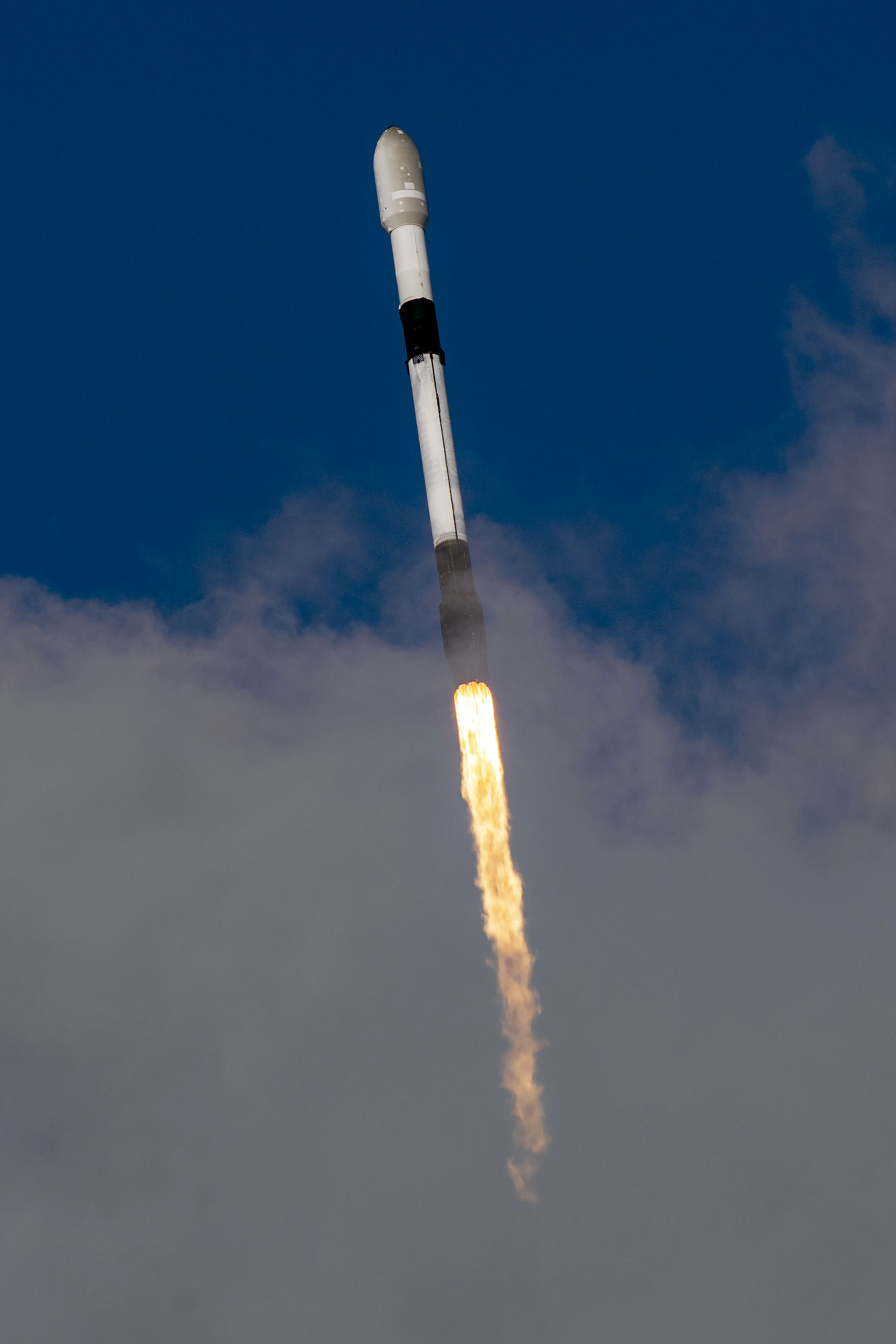
Falcon 9 Booster
The booster that supported the Starlink Group 5-3 mission is B1069-6; as the name implies, the booster had flown five previous times. This changed to B1069-7 upon successful landing.
| B1069’s missions | Launch Date (UTC) | Turnaround Time (Days) |
| CRS-24 | December 21, 2021 10:07 | N/A |
| Starlink Group 4-23 | August 27, 2022 03:41 | 249.73 |
| Hotbird 13F | October 15, 2022 05:22 | 48.07 |
| OneWeb 15 | December 8, 2022 22:27 | 54.71 |
| Starlink Group 5-3 | February 2, 2023 07:58 | 55.40 |
| SES-18 & SES-19 | March 17, 2023 23:38 | 43.65 |
Following stage separation, the Falcon 9 conducted two burns. These burns softly touched down the booster on SpaceX’s autonomous spaceport drone ship Just Read the Instructions.
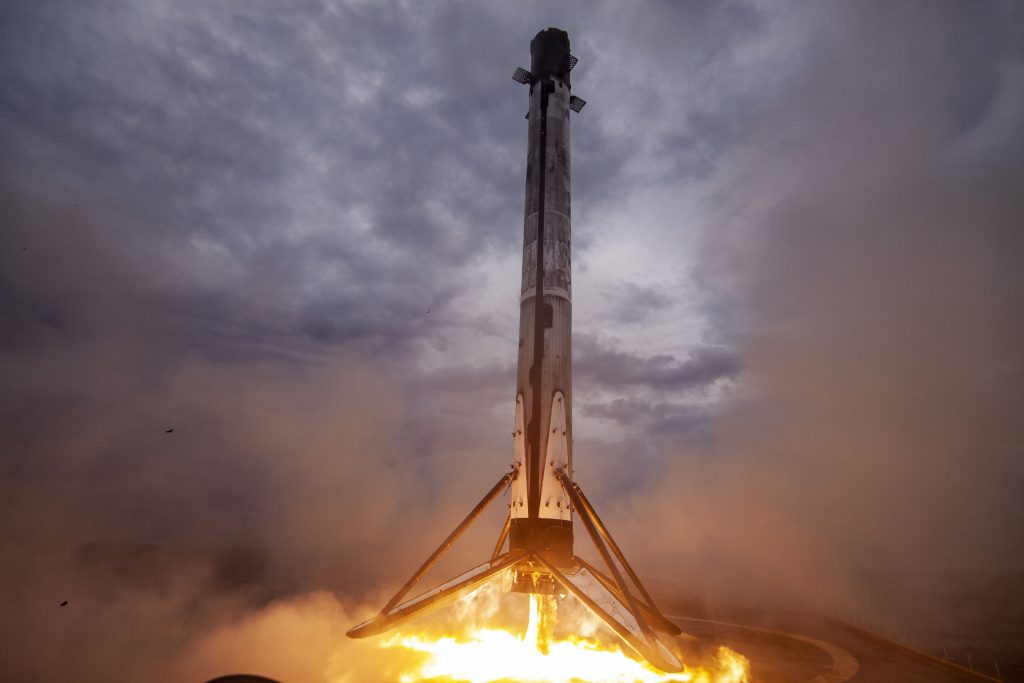
Falcon 9 Fairings
The Falcon 9’s fairing consists of two dissimilar reusable halves. The first half (the half that faces away from the transport erector) is called the active half and houses the pneumatics for the separation system. The other fairing half is called the passive half. As the name implies, this half plays a purely passive role in the fairing separation process, as it relies on the pneumatics from the active half.
Both fairing halves are equipped with cold gas thrusters and a parafoil which are used to softly touch down the fairing half in the ocean. SpaceX used to attempt to catch the fairing halves; however, at the end of 2020, this program was canceled due to safety risks and a low success rate.
In 2021, SpaceX started flying a new version of the Falcon 9 fairing. The new “upgraded” version has vents only at the top of each fairing half, by the gap between the halves, whereas the old version had vents placed spread equidistantly around the base of the fairing. Moving the vents decreases the chance of water getting into the fairing, making the chance of a successful scoop significantly higher.
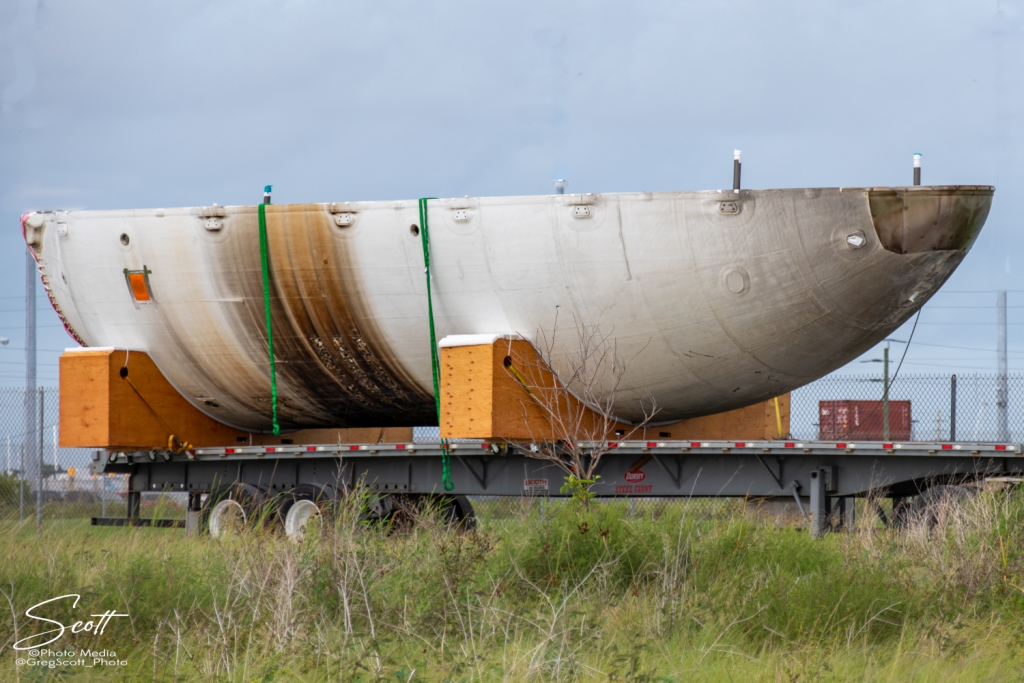

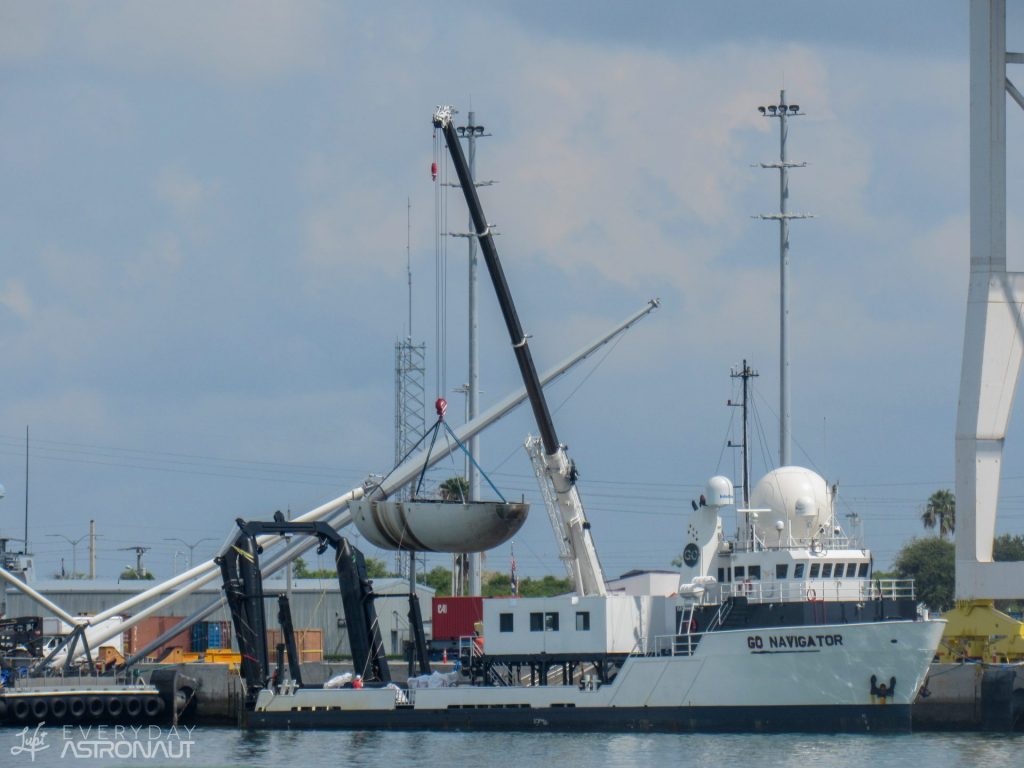
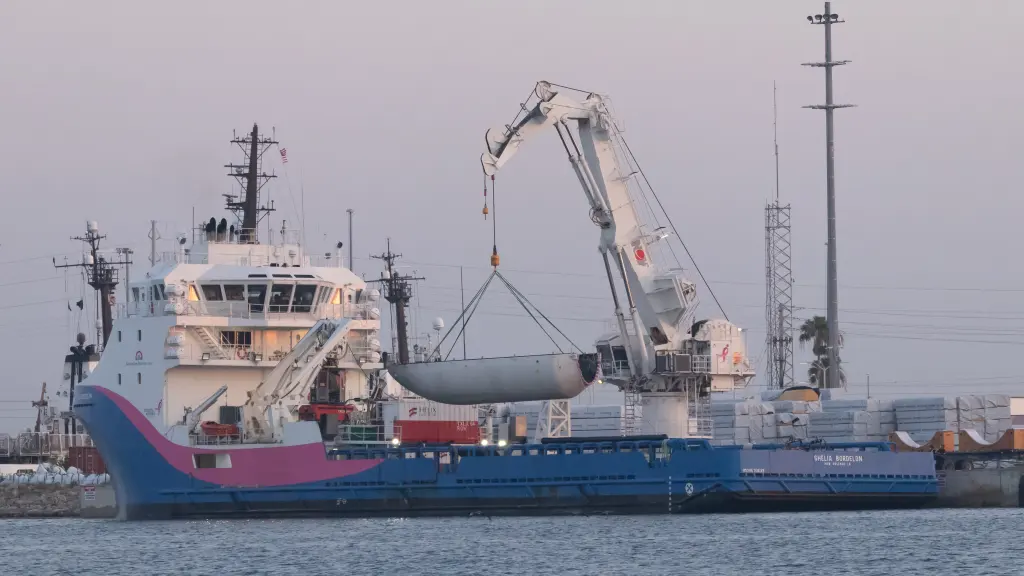
SES-18 & SES-19 Countdown
All times are approximate.
| HR/MIN/SEC | EVENT |
|---|---|
| 00:38:00 | SpaceX Launch Director verifies go for propellant load |
| 00:35:00 | RP-1 (rocket grade kerosene) loading underway |
| 00:35:00 | 1st stage LOx (liquid oxygen) loading underway |
| 00:16:00 | 2nd stage LOx loading underway |
| 00:07:00 | Falcon 9 begins engine chill prior to launch |
| 00:01:00 | Command flight computer to begin final prelaunch checks |
| 00:01:00 | Propellant tank pressurization to flight pressure begins |
| 00:00:45 | SpaceX Launch Director verifies go for launch |
| 00:00:03 | Engine controller commands engine ignition sequence to start |
| 00:00:00 | Falcon 9 liftoff |
SES-18 & SES-19 Launch And Landing
All times are approximate
| HR/MIN/SEC | EVENT |
|---|---|
| 00:01:12 | Max Q (moment of peak mechanical stress on the rocket) |
| 00:02:32 | 1st stage main engine cutoff (MECO) |
| 00:02:36 | 1st and 2nd stages seperate |
| 00:02:44 | 2nd stage engine starts (SES-1) |
| 00:03:21 | Fairing deployment |
| 00:06:36 | 1st stage entry burn begins |
| 00:07:00 | 1st stage entry burn complete |
| 00:08:17 | 2nd stage engine cutoff (SECO) |
| 00:08:24 | 1st stage landing burn begins |
| 00:08:45 | 1st stage landing |
| 00:26:17 | 2nd stage engine restarts (SES-2) |
| 00:27:04 | 2nd stage engine cutoff (SECO-2) |
| 00:32:15 | SES-18 deploys |
| 00:37:25 | SES-19 deploys |




